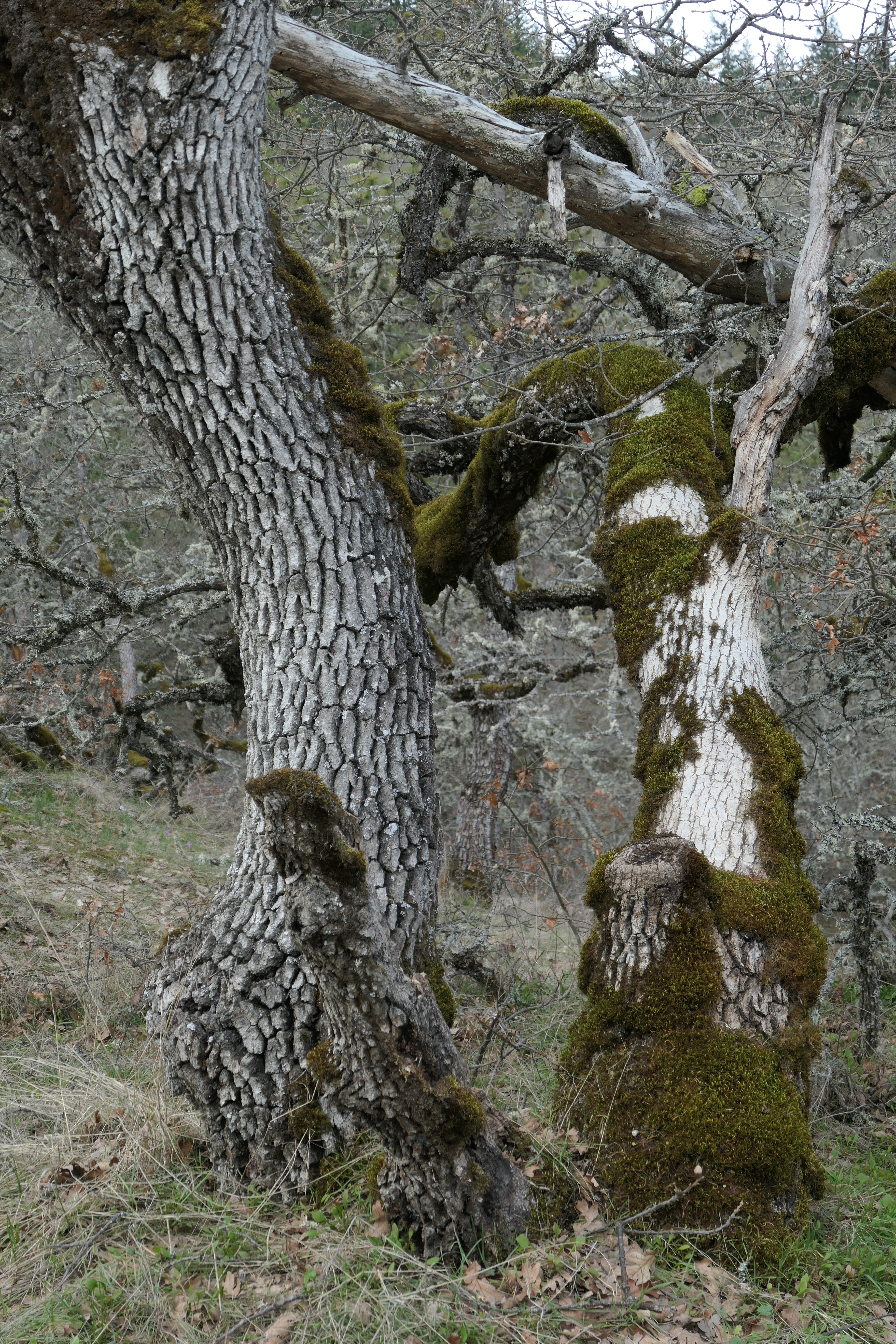The term widow-maker probably means different things to different people. The uninitiated older-than-35-year-old set who has never heard of, much less played the video game Overcraft, is probably oblivious to the fact that the term refers to an assassin also known as Amélie Lacroix. The unconcerned younger-than-35-year-old set will have no idea that it is the informal term for a deadly heart attack that involves 100 percent blockage in the left anterior descending (LAD) artery. And all of us in the overlap of those sets will probably be blissfully unaware that it is a term used in conjunction with dreadful accidents in forestry.

The reason this came to mind was a conversation with a person who happened to come by when I stood in front of the tree below – or what’s left of it – on Monday. A large part of the tree had come down last year, luckily falling when no-one was around. The remaining stump, still taller than a person, seemed solid enough, but all of a sudden in the last few days all of its bark, huge pieces of it, had come down at once, forming a large pile.

I was wondering out loud if someone or something had attacked it, it looked so violent. The guy explained: this is a widow-maker. I learned that diseased or old trees not only have limbs that break off, hang in the crowns and topple down when forestry workers try to fell the trees. They often spontaneously shed their entire bark when shaken by wind or axes, and those can kill the people underneath. The passer-by had indeed a friend who met that fate while working in the Oregon forestry industry.

Walking home, I was thinking of how many of those trees I encounter in my regular wanderings, here in Tryon Creek, Forest park, Oaks Bottom and out in the Gorge. How much depends on luck, not to be at the wrong place at the wrong time. And how overthinking of the possibilities can lead to levels of anxiety that would make it impossible to explore my world. This in turn lead me to remember a psych paper I read (with the advisory that the research area of personality is often subject to non-replication problems.) But here is the argument, a theoretically interesting one, in a nutshell (all research details and data sources can be found in the link below):

People have different attachment styles, some being secure, others less so. This leads to different advantages and disadvantages when it comes to how we function in life in general and face threats and dangers in particular. A third of us are securely attached and faring fine, the other two thirds not so much, being either highly anxious or avoidant. Why would evolution tolerate such a mix? It seems that independently of what it means for an individual to be anxious, or avoidant, or securely integrated, these differences in style might have huge positive implications for the social groups we live in.

For example, people who are close with their family members are less likely to react to noises or alarms indicating impending danger, like a fire. They only react to unambiguous signs, like flames and smokes, when precious time is already running short. Highly anxious people, on the other hand, are like the canary in the coal mine, sentinels who signal early warning.

Avoidant people are also late to realize danger, but then act quite decisively to rescue themselves, and their protective action signals to others the presence of danger as well as potential escape routes. The avoidant person’s survival behavior then might also, if unintentionally, save other people’s lives.
https://www.ncbi.nlm.nih.gov/pmc/articles/PMC4261697/

Now, all of this might be of no relevance if I walk alone in the woods, but it is reassuring to think that we as a social species have evolved to help each other out in social situations with present danger, whether consciously or not. Probably won’t be my last thought, though, when that branch hits……

Music today seems to beckon for Dvorack’s Silent Woods…..
https://www.youtube.com/watch?v=yZYmFWcHdB4

And here is one of the most beautifully written essays on facing just this kind of threat. https://www.nytimes.com/interactive/2019/03/20/magazine/kayaking-trip-alaska.html






